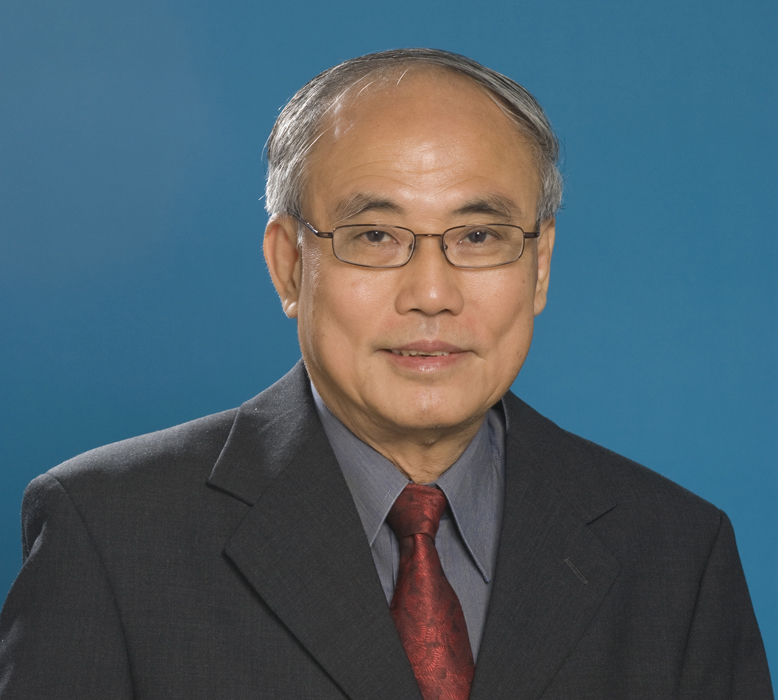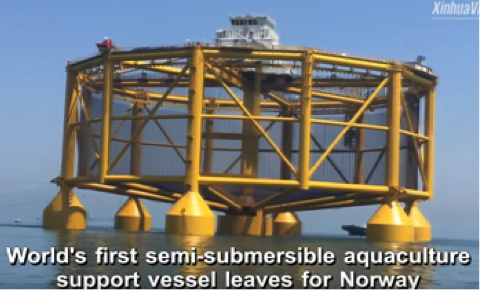President's Message
Message 06/2018

Mr Lim Soon Heng, PE, FIMarEST.
Founder President
THE MERITS OF REARING RATHER THAN TRAWLING FISH IN THE OPEN SEAS

Massive steel structures built in a dry dock in Qingdao, China were sighted off the Straits of Singapore being dry towed to Norway. Each structure measures 110 meters in diameter 70 meters deep with capacity to hold 250,000 cubic meters of water for rearing 1.5 million salmons. Assuming each mature salmon is 4 kg, this represents a stocking density of 24 kg/m3 (6 fish per cu. m of water.) According to experts, this is acceptable for the welfare of the fish.
Rearing fish in the sea leaves a very small water footprint (in the form of water consumed to produce the fish food.) The physical footprint based on above data, is even more impressive. At 630 kg of meat per sq. meter, it is six times higher than rearing pigs. The carbon footprint for salmon meat is a fraction of that for a beef. According to aquabounty.com, it consumes food equivalent to its own weight compared to about 8, 3 and 2 times for cow, pig and chicken respectively. Besides, it does not take up land, which could be used for growing crops.
Each structure weighs about 10,000 tons and cost S$30 million ex-shipyard. Over its designed life of 20 years, the straight-line depreciation is $1.5 million/yr. Assuming a harvest every 18 months, this depreciation cost works out to a about S$0.375 per kg of salmon (less than 10% of the wholesale price of the produce.)
Fish farming is a growth industry. This is in spite of the risk of mass fatality due to pests, disease and algae bloom and predator (otters, sharks and whales to mention a few) attack. Food is need for farmed fish. None is required for wild ones.
Financial Times in September 2017 quoted FAO as saying, “The global aquaculture market is expected to continue growing at four to 5 per cent a year over the next decade, with global farmed fish production forecast to expand a third by 2026.”
Why has this sector grown so rapidly? As a source of animal protein, fish meat outranks others. The demand for fish expands at a rate that wild fishing can no longer meet. The solution is to rear fish in farms as we do with other animals. Farmed fish grow much faster than their wild cousins do. Production is mechanised, free from the vagaries of weather and reliable and you know exactly where to go when you want to catch your fish.
Trawling for wild fish results in collateral damage. The trawling net catches a lot of non-targeted marine life. The young of marine life necessary for reproduction of their species are unintentionally obliterated. Bottom trawling also destroys corals, which are the habitat of many types of fish.
Open sea fish farming is an embryonic industry. It deserves the support it receives from the government. Large floating structures with enclosed volumes of 200,000 cubic metres (80 times the size of an Olympic swimming pool) are buildable in local shipyards and deliverable anywhere in the world. Local investors can take comfort in the fact that these structures have the Singapore quality assurance. That said, some investors might want invite bids from shipyards from China or Vietnam to see where he can it built for less.
In addition, these structures are deployable anywhere in the world. It means that investors need not be restricted to any particular geography. When the business environment becomes untenable because of geopolitics or natural catastrophic events, the investor has the option at any time to relocate to greener pastures. The risk to the financier and underwriter of the structure is likewise reduced because the structure may be repossessed and relocated for use by a third party.
The above advantages are not available to the farmer who wishes to produce farmed fish on land.
Lim Soon Heng
9th June 2018
